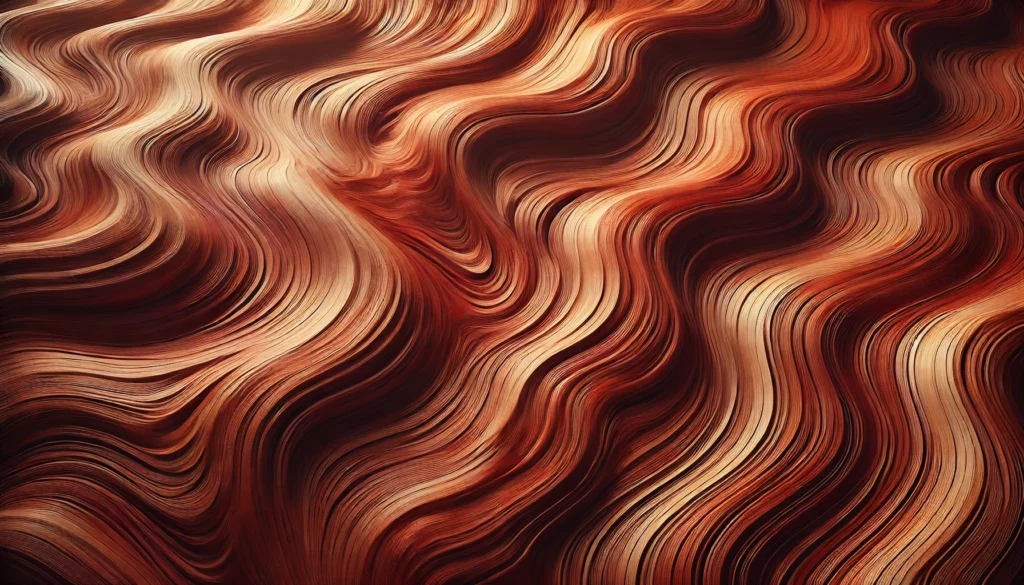
How to Choose the Best Sequoia Wood for Your Projects: A Complete Guide to Quality, Durability, and Sustainability
When it comes to selecting the perfect wood for your next project, few options can match the timeless appeal and strength of sequoia wood 
Table of Contents
ToggleWhat Makes Sequoia Wood Special? 

Sequoia timber isn’t just another type of lumber—it’s a unique, high-quality material that stands out for its stunning features. Here’s what makes it so special:
1. Natural Beauty and Unique Appearance 
One of the first things you’ll notice about Sequoia timber is its rich, reddish-brown color and beautiful grain patterns. The wood often has a soft, flowing grain that gives it a distinct, elegant look. Whether you’re using it for furniture, decking, or even interior decor, its natural beauty makes it a showstopper in any project.
2. Durability and Longevity 
Sequoia wood is known for its strength and resistance to decay. Thanks to its natural oils and tannins, it can withstand the elements better than many other types of wood. This makes it perfect for outdoor projects like decking, garden furniture, or even siding, where longevity and durability are crucial.
3. Lightweight Yet Strong 
Despite its impressive durability, Sequoia timber is relatively lightweight. This makes it easier to work with while still providing strength and support. Whether you’re crafting intricate wood pieces or building something more robust, you’ll find Sequoia timber to be a perfect balance of weight and strength.
4. Eco-Friendly Choice 
Sequoia trees are native to specific regions, and they’re sustainably managed in many areas. Using Sequoia timber ensures you’re choosing a renewable, eco-friendly material. Additionally, many suppliers now offer wood that’s certified by sustainability organizations, making it a great option for environmentally conscious builders and DIY enthusiasts.
5. Resistant to Pests and Rot 

Sequoia wood naturally resists pests like termites and other insects, which can wreak havoc on other types of wood. Its resistance to rot and decay further enhances its suitability for outdoor and moisture-prone projects. This means less maintenance for you and more peace of mind.
6. Ease of Maintenance 
Unlike some woods that require regular treatment or sealing, Sequoia timber tends to maintain its beauty and resilience over time with minimal care. An occasional cleaning is usually all that’s needed to keep it looking great.
7. Sustainability in Use 
Beyond just being an eco-friendly choice, sequoia wood is a sustainable resource when harvested responsibly. Many companies follow responsible forestry practices, ensuring that future generations can enjoy this wood without depleting the natural resources.
In short, Sequoia timber is not just a pretty face—it’s an all-around high-performance material that delivers on beauty, strength, sustainability, and ease of use. Whether you’re building a new project or upgrading your space, Sequoia timber should be at the top of your list!
Quality – How to Assess Sequoia Wood for Your Needs 

When choosing Sequoia timber for your projects, understanding its quality is essential to ensure you get the best results. Whether you’re crafting furniture, building structures, or working on smaller DIY projects, knowing how to assess the wood’s quality will save you time, money, and effort. Here’s a simple, practical guide to help you evaluate Sequoia timber effectively.
1. Look at the Grain and Texture 
The grain of Sequoia wood should be straight and uniform. A consistent grain pattern ensures the wood is sturdy and will perform well over time. Check for any visible twists or irregularities, which could indicate weaker spots. The texture should be smooth to the touch but may vary slightly depending on the cut. Look for any rough areas that might need extra sanding.
2. Check the Color and Appearance 
High-quality Sequoia timber typically has a rich reddish-brown color, which can vary slightly depending on the age and location of the tree. However, be cautious of overly dark spots or discoloration, which could be signs of rot, disease, or poor storage. A uniform color without visible stains or blemishes is a good indicator of high-quality wood.
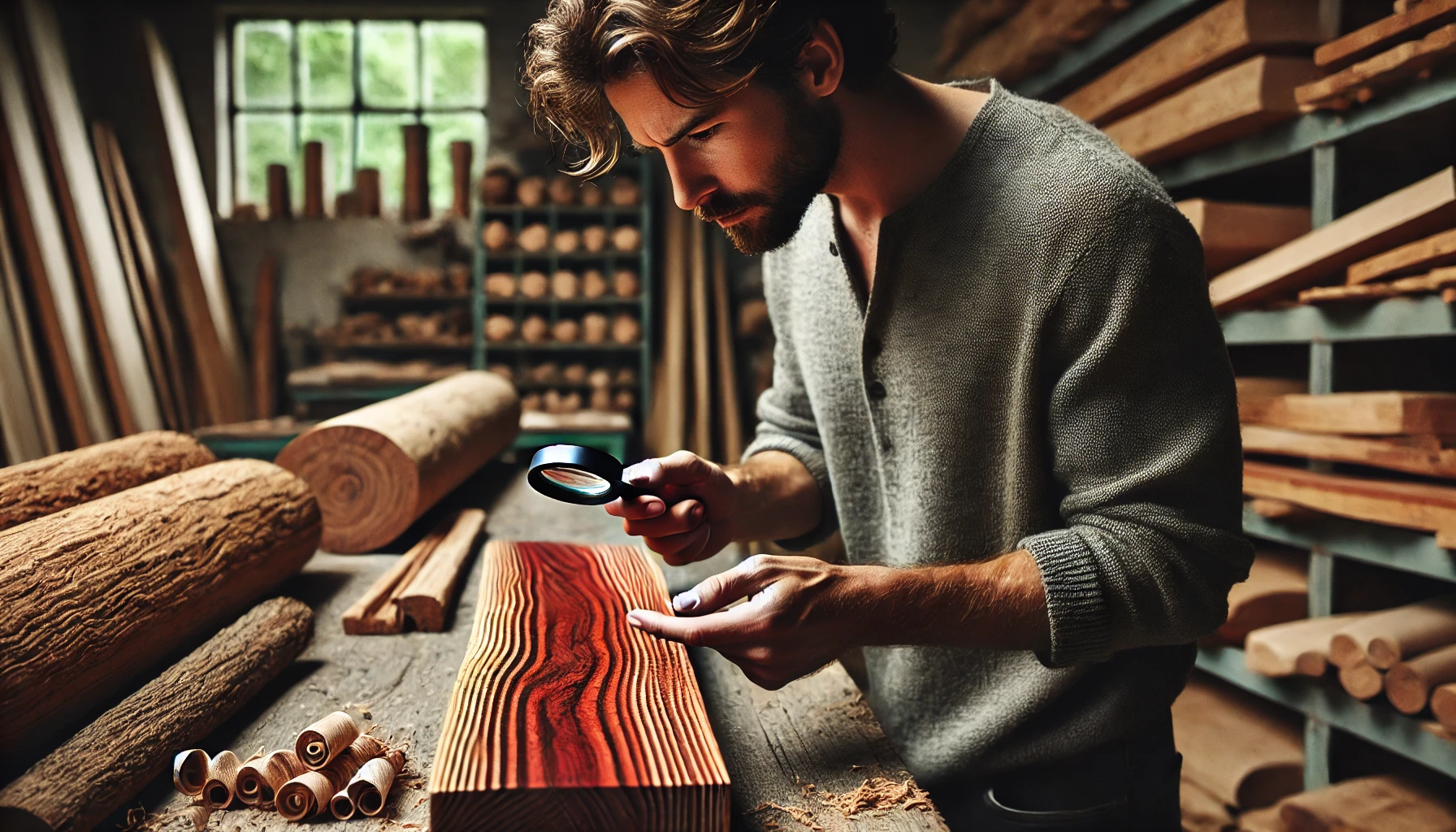
3. Assess the Wood’s Moisture Content 
Sequoia timber should be dried to an appropriate moisture level (around 6-8%) before use. Too much moisture can lead to warping, cracking, or mold growth. You can check the moisture level using a moisture meter or simply by testing if the wood feels damp to the touch. Wood that’s too moist is not ideal for long-lasting projects.
4. Inspect for Defects 
Defects in Sequoia timber—like knots, cracks, and splits—can weaken its structure and affect its performance. While small knots can be acceptable, large ones or cracks that go deep into the wood should be avoided. Defects reduce the strength of the wood and can compromise the quality of your finished product.
5. Test the Wood’s Durability 
Sequoia wood is known for its durability, but it’s important to ensure that the specific piece you’re considering has been properly treated and is free from defects. Gently tap the surface of the wood with a hammer or your hand to test its resilience. If it sounds solid, it’s a good sign that the wood is robust and will stand the test of time.
6. Consider the Source and Sustainability 
For projects where sustainability is a priority, make sure the Sequoia timber is sourced responsibly. Look for certifications such as FSC (Forest Stewardship Council) to confirm that the wood comes from well-managed forests. Sustainable wood is not only good for the planet, but it also ensures you’re using high-quality, responsibly harvested material for your projects.
Quick Recap:
- Grain & Texture: Look for straight, uniform grains and a smooth texture.
- Color & Appearance: Avoid discoloration, stains, and visible damage.
- Moisture Content: Ensure the wood is properly dried to avoid warping.
- Defects: Check for knots, cracks, or splits that could weaken the wood.
- Durability: Test the resilience to ensure the wood is strong and solid.
- Source & Sustainability: Choose wood that is ethically sourced and certified.
By following these simple tips, you’ll be able to confidently assess Sequoia timber and choose the best pieces for your next project. Happy crafting!
Durability – Why Sequoia Wood Lasts Longer 
When it comes to choosing wood for your projects, durability is key. Sequoia timber is renowned for its incredible ability to withstand the test of time, making it a top choice for both indoor and outdoor uses. Here’s why Sequoia timber lasts longer and how you can make the most of its lasting power!
1. Natural Resistance to Decay 
Sequoia wood has a unique natural resistance to decay, thanks to its high levels of tannins and oils. These compounds help protect the wood from moisture, fungi, and insects, which are common causes of wood deterioration. Whether you’re building outdoor furniture or decking, Sequoia is a reliable choice that stands up well to the elements, especially in humid or rainy conditions.
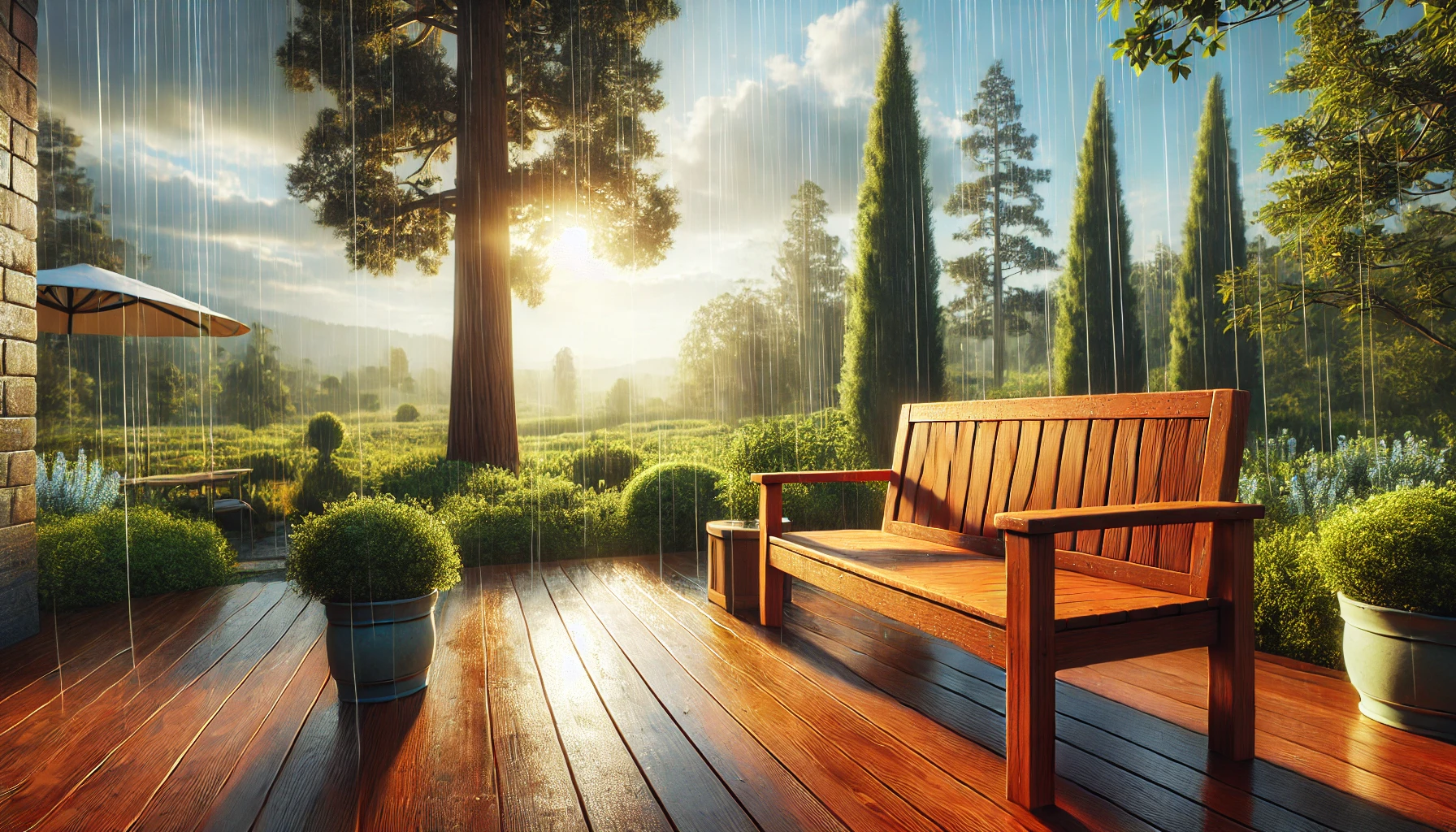
2. Incredible Strength and Stability 
Another reason Sequoia timber lasts so long is its strength. Sequoia trees grow tall and sturdy, which gives their wood exceptional stability. When used in construction or as lumber for furniture, Sequoia timber resists warping, cracking, or shrinking over time. This is crucial for projects that require long-term stability, like framing, flooring, or structural elements.
3. Low Maintenance Requirements 
Because of its inherent durability, Sequoia wood doesn’t require as much maintenance as other types of wood. You won’t need to constantly treat it with chemicals or sealants to keep it looking great. This means less time spent on upkeep and more time enjoying your projects, making Sequoia timber a smart and low-maintenance choice for busy homeowners and professionals alike.
4. Perfect for Outdoor Use 
Sequoia timber thrives in outdoor environments. Whether it’s exposed to sunlight, rain, or even snow, it maintains its structure and beauty over many years. This makes it perfect for creating decks, garden furniture, or even fences that last long and remain resilient to the elements.
5. Long Lifespan for Investment Projects 
Investing in Sequoia timber means you’re making a choice for the long term. Due to its remarkable durability, Sequoia wood doesn’t just look good right away—it stays looking good for years. This makes it a wise investment for any project, saving you money on replacements or repairs in the future.
Conclusion
Sequoia timber’s durability comes from its natural properties, strength, and ability to withstand the elements. Whether you’re building a deck, crafting furniture, or working on any other project, choosing Sequoia wood ensures you’re getting a product that will last for generations. Its low-maintenance needs and resistance to decay make it a smart choice for any craftsperson or homeowner looking to invest in long-lasting quality.
Ready to use Sequoia timber for your next project? Start with confidence, knowing it’s built to last!
Sustainability – Sequoia Wood as an Eco-Friendly Option 
When choosing materials for your projects, sustainability is a key factor to consider. Sequoia wood stands out as an eco-friendly option due to its renewable nature, minimal environmental impact, and long-lasting qualities. Here’s why Sequoia timber is a top choice for conscious builders and designers looking to go green 
1. Renewable Resource 
Sequoia trees are fast-growing, which means they can regenerate quickly compared to other hardwoods. This makes Sequoia wood a renewable resource, helping reduce the strain on forests and contributing to sustainable harvesting practices. When harvested responsibly, Sequoia timber supports healthy ecosystems and reduces deforestation.
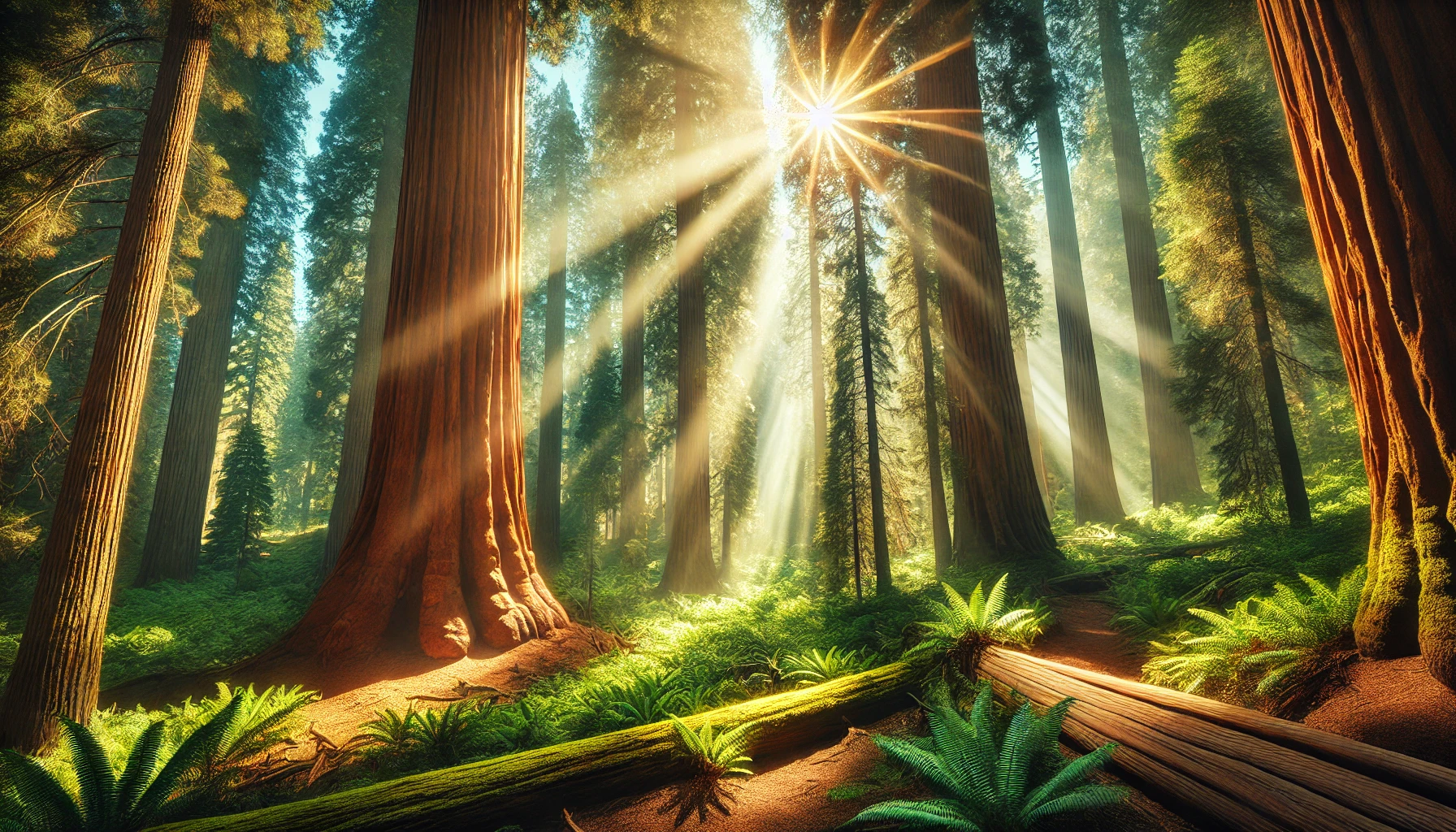
2. Carbon Footprint Reduction 
Like all trees, Sequoia absorbs carbon dioxide from the atmosphere during its growth. By using Sequoia wood, you’re essentially locking away carbon in a durable material that can last for decades, sometimes centuries. This helps reduce the overall carbon footprint of your projects, making it a smart choice for the environment 
3. Durable and Long-Lasting 
Sequoia timber is not only beautiful but also incredibly durable. It resists decay, pests, and weathering, meaning it requires fewer replacements or treatments over time. This longevity makes Sequoia a sustainable choice, as you’re reducing the need for frequent repairs or replacements, ultimately minimizing waste.
4. Eco-Friendly Harvesting Practices 
Sequoia trees are often harvested using sustainable forestry practices, which ensure that the environment is preserved while still meeting the demand for quality wood. Many Sequoia timber suppliers are certified by organizations like the Forest Stewardship Council (FSC), meaning the wood is sourced from responsibly managed forests that protect biodiversity.
5. Biodegradable and Non-Toxic 
Sequoia wood is a completely natural material, free from harmful chemicals or toxins. Unlike synthetic materials, it’s biodegradable, which means it won’t contribute to pollution when it’s no longer in use. This makes Sequoia a safer choice for both the planet and your health.
Final Thoughts 
If you’re looking for a sustainable and eco-friendly material for your next project, Sequoia timber is a fantastic option. Not only is it renewable, but its durability and minimal environmental impact make it a top choice for eco-conscious builders, designers, and DIY enthusiasts. Whether you’re crafting furniture, decking, or architectural features, choosing Sequoia wood helps protect the planet while still achieving high-quality, long-lasting results 
Best Uses for Sequoia Wood 

Sequoia timber is a beautiful and versatile material, prized for its rich color, strength, and natural resistance to decay. Whether you’re a seasoned craftsman or a beginner, understanding how to best use this incredible wood will help you create lasting, high-quality projects. Here are some of the best uses for Sequoia wood, along with practical tips for getting the most out of it.
1. Outdoor Furniture 

Sequoia wood is perfect for creating outdoor furniture because of its exceptional durability. Its natural resistance to moisture and pests makes it a great choice for garden benches, tables, and chairs that will stand the test of time, even in harsh weather conditions. The wood’s smooth texture and warm tones add an elegant, rustic feel to any outdoor space.
Tip: Seal your Sequoia timber furniture with a weatherproof finish to keep it looking beautiful year-round.
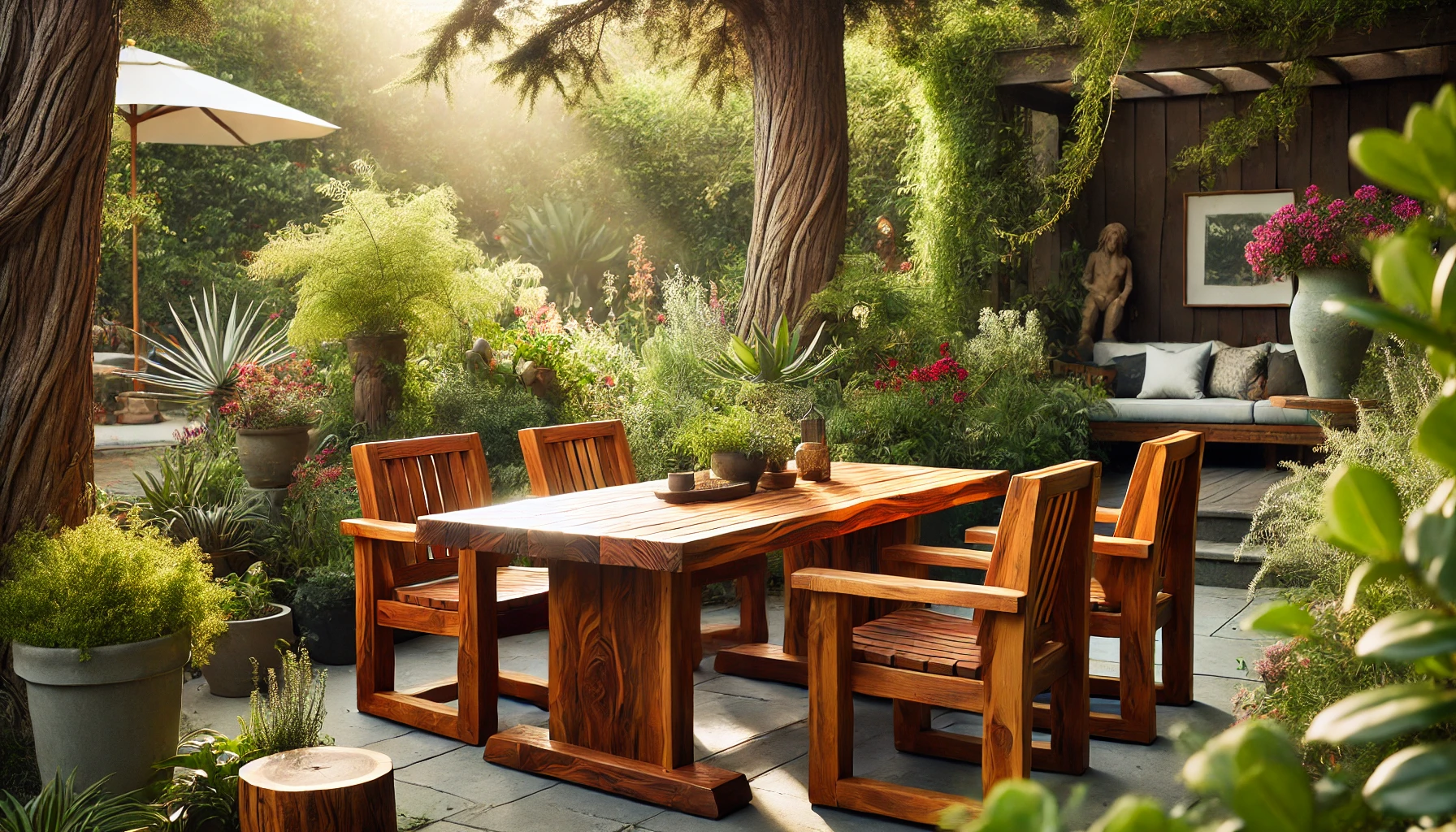
2. Decking and Patio Projects 

Another great use for Sequoia wood is in decking and patios. The wood’s ability to resist rot and insects, along with its natural strength, makes it ideal for building durable and attractive outdoor structures. Whether you’re building a new deck or adding an extension to your patio, Sequoia timber will provide the long-lasting support you need.
Tip: Regularly clean and reseal your Sequoia deck to maintain its longevity and preserve its color.
3. Cabinetry and Fine Furniture 

Sequoia wood’s fine grain and rich color make it an excellent material for high-end cabinetry and fine furniture. Whether you’re designing a custom kitchen or building a statement piece like a coffee table, Sequoia timber offers both beauty and strength. It holds finishes well, allowing you to achieve a stunning, polished look.
Tip: Opt for a clear finish to highlight the wood’s natural patterns, giving your furniture a timeless appearance.
4. Flooring 

Sequoia wood is an ideal choice for flooring due to its strength and durability. Its resistance to wear and tear makes it suitable for both high-traffic areas and cozy rooms. Plus, the natural color variations bring a warm, inviting atmosphere to any space.
Tip: Be sure to choose a quality finish that will protect your Sequoia floors from scratches and stains while enhancing their natural beauty.
5. Wooden Cladding and Siding 

Sequoia timber is commonly used for exterior cladding and siding due to its resistance to weather conditions and its ability to maintain its appearance over time. It gives homes and buildings a rustic yet modern look, offering excellent insulation and protection from the elements.
Tip: Make sure to treat your Sequoia timber with a protective coating to ensure its longevity and resistance to UV rays.
6. Crafting and Carving 

If you’re into woodworking or crafting, Sequoia wood’s ease of carving and fine grain makes it a fantastic choice for projects like sculptures, wooden bowls, or custom signs. Its smooth texture allows for intricate designs and shapes, while its stability ensures that your creations will stand the test of time.
Tip: Sand your Sequoia timber pieces carefully to remove any rough spots before carving or painting for a professional finish.
7. Garden Structures 

Sequoia timber is an excellent material for building garden structures like trellises, pergolas, and planters. Its resistance to moisture and insects makes it a sustainable choice for these outdoor projects. Plus, the natural color and grain of Sequoia wood blend beautifully with plants and flowers, creating a harmonious and functional space.
Tip: Treat Sequoia timber structures with a protective coating to ensure they remain sturdy and visually appealing for years.
Final Thoughts 
Sequoia wood is a durable, versatile, and visually stunning option for a wide variety of projects. From outdoor furniture to fine cabinetry, its natural qualities make it an excellent choice for both beginners and experienced woodworkers alike. Whether you’re building a deck or crafting a custom table, using Sequoia timber will ensure that your projects are not only functional but also timelessly beautiful. Happy crafting!
How to Buy Sequoia Wood – Tips for Smart Purchases 
Buying Sequoia timber for your projects can be an exciting, but sometimes overwhelming, process. Whether you’re crafting furniture, building a deck, or working on a DIY project, you want to make sure you’re getting the best quality wood at the right price. Follow these tips to make a smart, confident purchase and ensure your project turns out perfectly!
1. Know the Source of the Wood 
Sequoia trees are protected and often found in national parks or preserved forests. Ensure the wood you buy comes from a sustainable source that adheres to responsible logging practices. Check for certifications like FSC (Forest Stewardship Council) to confirm that the wood is harvested ethically and doesn’t contribute to deforestation.
2. Choose the Right Type of Sequoia Wood 
Not all Sequoia timber is the same! The two main types are Redwood and Giant Sequoia. While both are similar in appearance and durability, Redwood is typically more popular for outdoor furniture and landscaping due to its resistance to weathering. Giant Sequoia is more commonly used for structural applications like beams or timber framing. Make sure to choose based on your project’s needs.
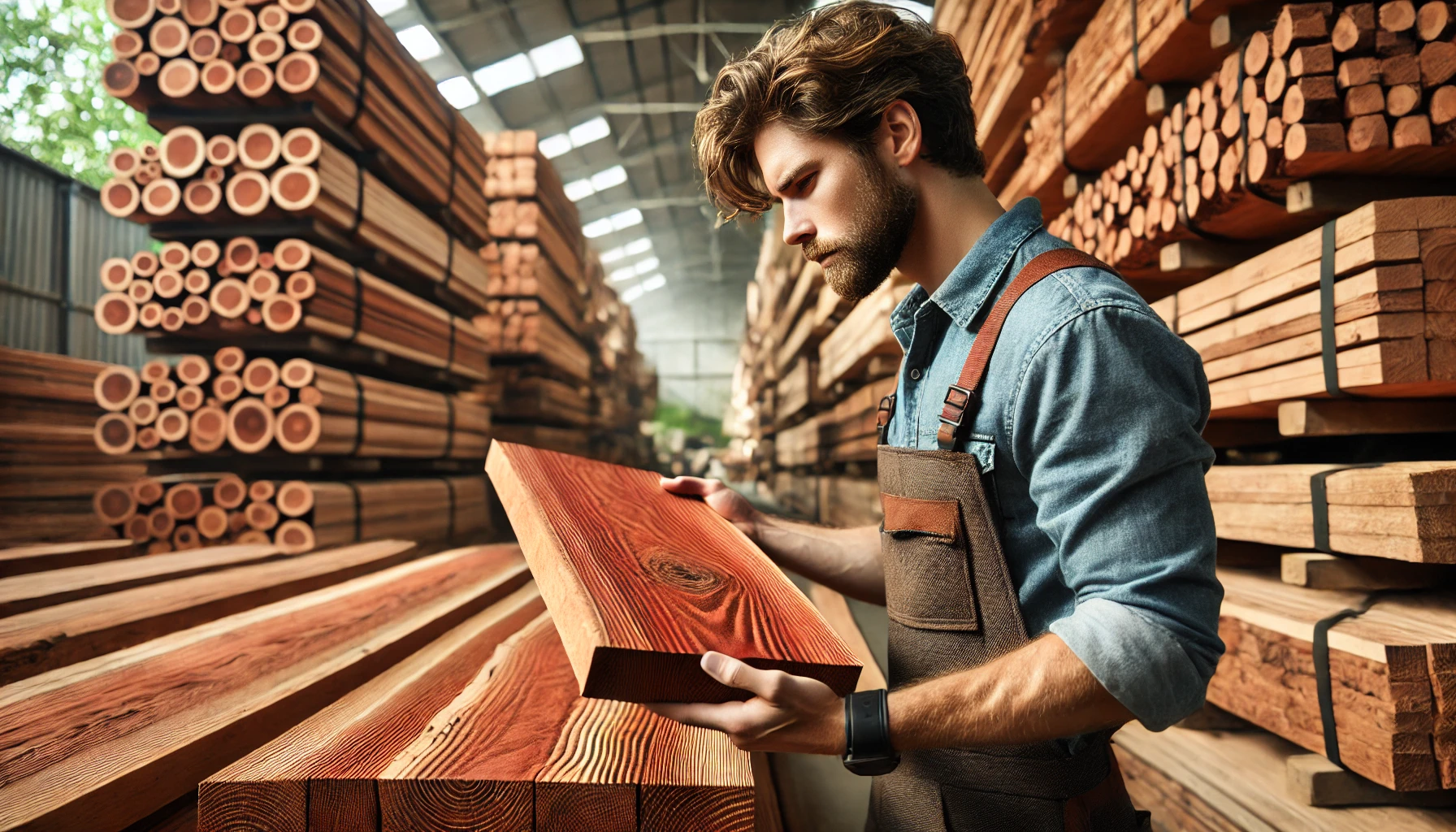
3. Check for Quality and Grading 
Sequoia timber should be smooth, free of defects, and well-seasoned. It’s graded based on its appearance and strength. Look for wood with a high-quality grade (like No. 1 or Select) if you’re going for a premium, aesthetic finish. For construction purposes, construction-grade wood may be sufficient. Always inspect the wood in person (if possible) or ask for detailed pictures if buying online.
4. Consider the Price 
Sequoia timber can be expensive due to its rarity and the resources needed for harvesting. Prices can vary greatly depending on quality, size, and type. Shop around and get quotes from multiple suppliers to find the best deal. Keep in mind that while it may cost more upfront, Sequoia timber’s durability and long lifespan can save you money in the long run!
5. Factor in the Size and Dimensions 
Before purchasing, carefully measure the wood you need and check the dimensions available from the supplier. Sequoia timber typically comes in various sizes—from small planks to large beams. Double-check your measurements to avoid ordering too much or too little. It’s always better to overestimate rather than fall short!
6. Look for Local Suppliers 
Buying locally not only supports your community, but it can also reduce costs on delivery and shipping. Local suppliers may also offer wood that is fresher, better acclimated to your area, and potentially cheaper than large-scale distributors.
7. Ask About Sustainability and Maintenance 
Sequoia timber is naturally resistant to rot and pests, but it still benefits from some maintenance. Ask your supplier for advice on how to care for the wood, especially if it will be exposed to the elements. Some may offer preservatives or treatments that can enhance the wood’s longevity, particularly for outdoor use.
8. Check Return Policies and Warranties 
Accidents happen, and you want to make sure you’re covered if the wood arrives damaged or isn’t what you expected. A flexible return policy and warranty from the supplier can give you peace of mind and make your purchase feel safer.
By following these tips, you’ll be able to make an informed decision and get the best Sequoia timber for your project!
Happy crafting!
Conclusion
Choosing the right wood for your project can make all the difference in terms of durability, aesthetics, and environmental impact. Sequoia timber stands out as a premium option that delivers on all fronts. Its natural beauty, exceptional strength, and remarkable sustainability make it an ideal choice for a wide range of woodworking projects, from fine furniture to outdoor structures.
In this guide, we’ve explored the key factors to consider when selecting Sequoia timber, including its unique qualities, durability, and environmental benefits. By understanding these aspects, you can confidently choose Sequoia timber for your next project and ensure that you’re investing in a material that will stand the test of time.
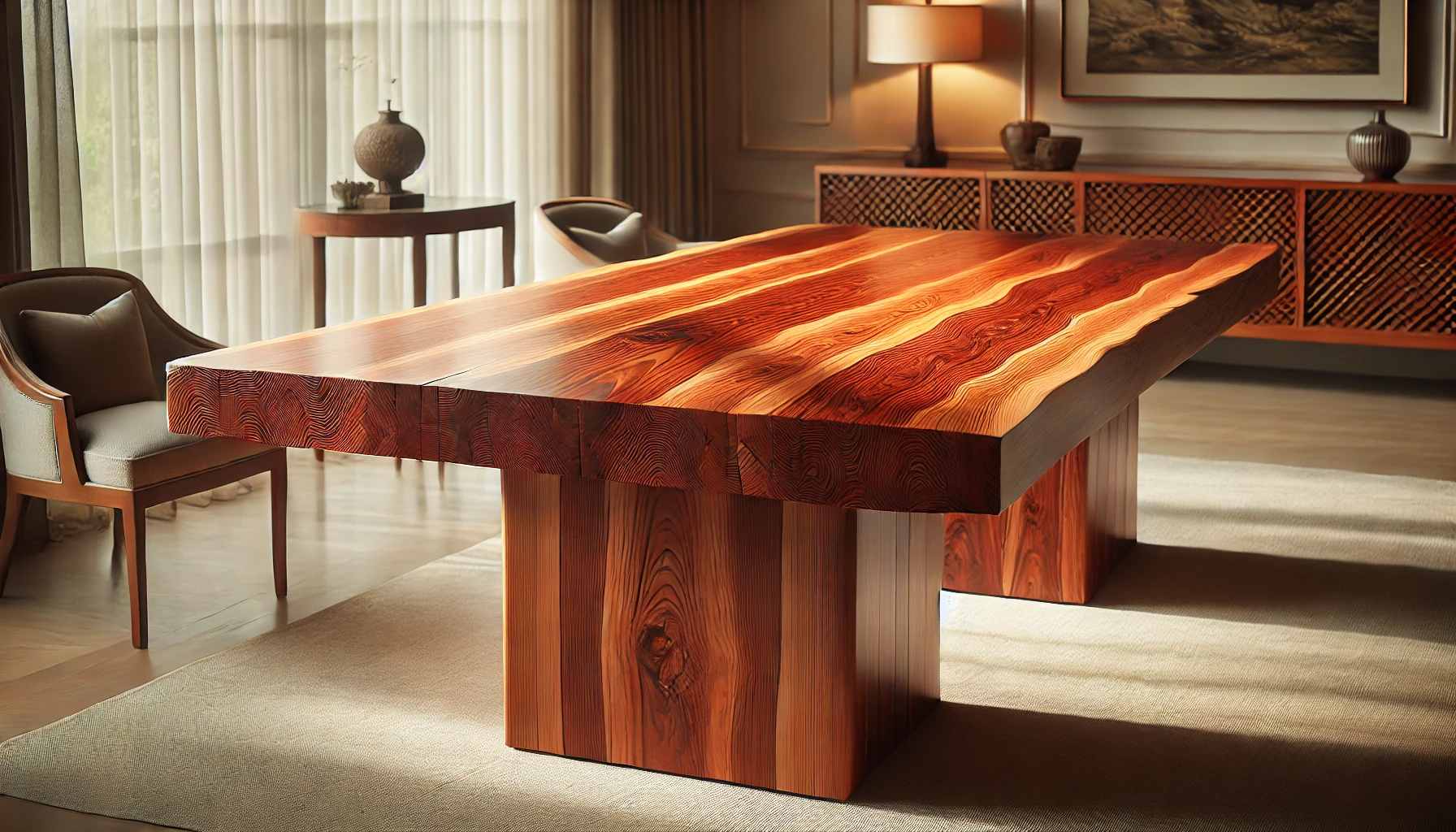
Whether you’re building custom furniture, designing an outdoor deck, or creating intricate decor, Sequoia wood offers unmatched versatility and longevity. Remember to look for high-quality, sustainably sourced wood and care for it properly to maximize its lifespan and beauty.
We hope this guide has helped you understand why Sequoia timber is an excellent choice and provided you with the insights needed to make an informed decision. Happy woodworking, and best of luck with your next project!
Frequently Asked Questions(FAQ)
What makes Sequoia wood different from other types of wood?
Sequoia wood is known for its unique combination of light weight, strength, and beautiful grain patterns. It also has natural resistance to decay, pests, and weathering, making it ideal for both indoor and outdoor use. These characteristics set it apart from other hardwoods like oak or maple.
Is Sequoia wood suitable for outdoor projects?
Yes, Sequoia wood is highly durable and resistant to environmental factors like moisture, decay, and pests, making it perfect for outdoor projects such as decking, fencing, and garden furniture. However, applying a protective finish can further enhance its longevity and appearance when exposed to the elements.
How can I tell if Sequoia wood is of good quality?
Look for a straight, even grain and consistent color. Avoid pieces with visible cracks, knots, or warping. Checking the moisture content is also important, as wood that is too wet or too dry can cause issues with stability over time.
Is Sequoia wood sustainable?
Yes, Sequoia wood can be sustainably sourced, especially if it’s certified by organizations like the Forest Stewardship Council (FSC). This ensures that the wood comes from responsibly managed forests, making it an eco-friendly choice for those concerned about environmental impact.
Can Sequoia wood be used for furniture making?
Absolutely! Sequoia wood is an excellent choice for furniture due to its beautiful grain, smooth texture, and durability. It’s especially popular for creating custom pieces like tables, chairs, and cabinets, adding both function and aesthetic appeal to any space.
How do I maintain Sequoia wood to ensure it lasts?
To maintain Sequoia wood, clean it regularly with a soft cloth to remove dust and dirt. For outdoor projects, apply a weather-resistant finish or sealant to protect it from moisture and UV damage. If using it indoors, avoid direct sunlight to preserve its color and prevent drying out.
What are the best uses for Sequoia wood?
Sequoia wood is versatile and can be used for a wide range of projects, including furniture, flooring, outdoor decking, and decorative items. Its strength and attractive appearance make it ideal for both structural and decorative applications.
Where can I buy high-quality Sequoia wood?
You can buy Sequoia wood from reputable lumber suppliers, both online and in local stores. Make sure to choose suppliers who offer sustainably sourced wood and provide detailed information about its quality and certification. Checking reviews and asking for recommendations can also help you find the best source for your needs.




